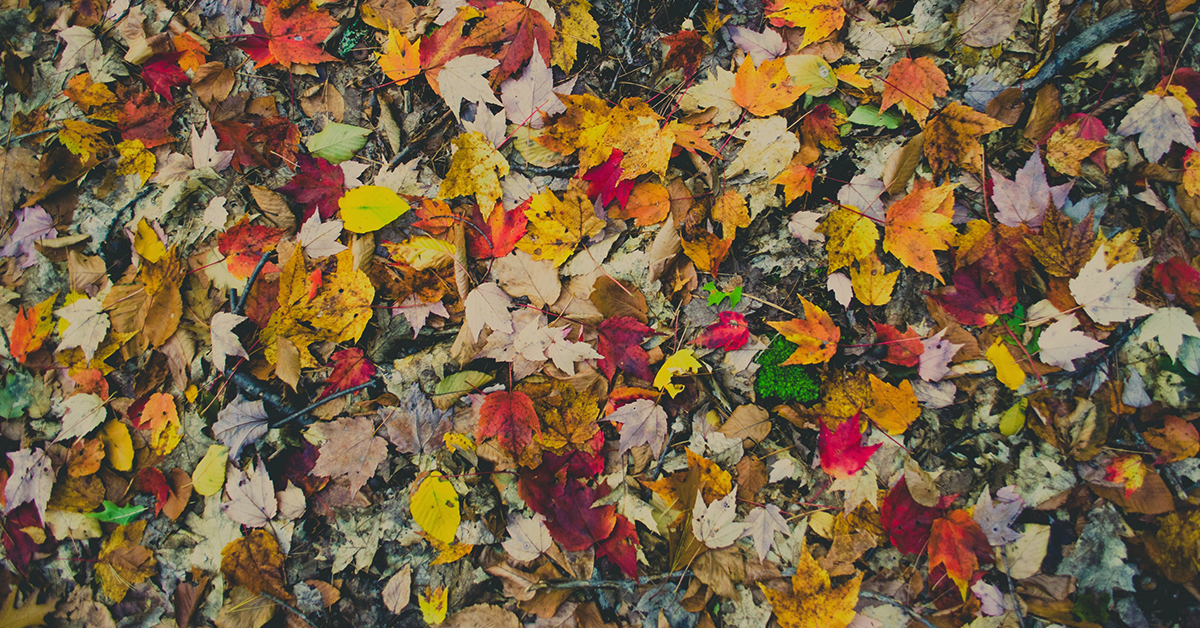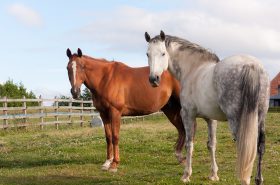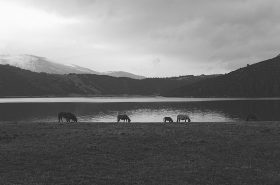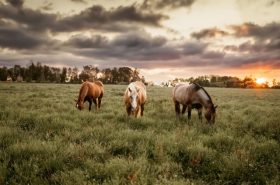Cooler temperatures will be arriving with autumn.
You and your horse have nearly survived the hot days of summer. Fall is almost here and cooler weather is on the horizon. As a horse owner, you’ve probably begun to prep for the new season that is coming. It’s a great time to assess your horse’s body condition and overall health. You’ll also have to get your barn ready for these seasonal changes.

Dietary Adjustments
Toward the end of summer, the grass began to dry and disappear in many places. The majority of horse owners will need to transition to hay at some point. It’s a good idea to buy your hay in bulk now and stock up your loft. Hay prices will be gradually getting more expensive as winter approaches. Not to mention, many suppliers may run out or only have poor quality left if you wait too long.
For those that still have grass in their fields, fall laminitis is a real concern. The evenings are cool and the days are warm and sunny. This can lead to a concentration of stored sugars in the grass. Those horses that are overweight or struggle to maintain normal blood sugar levels should be watched carefully.
You’ll need to consider a ration or forage balancer, which contains the necessary vitamins and minerals. This will help to meet your horse’s nutritional requirements without fresh pasture available. Some horse owners will also need to look into commercial grain and/or add more fiber like beet pulp, especially if their horse is underweight.
Cooler weather will result in your horse drinking less water. Make sure to monitor their intake levels. Fresh, clean water should be available at all times! Dehydration is the leading cause of impaction colic.
You’ll want to think ahead for fall leaves, as well! Many trees begin to drop their leaves around October and November. Some of them will be toxic to your horse if consumed! Keep your horse out of those fields or fence off the areas carefully.

General Maintenance
Fall is a good time to get your horse’s blankets ready if you plan to use them this winter. You can make any repairs or order new ones. Some horse owners choose to leave their horses natural; there’s nothing wrong with that! Others will want to clip, especially if their horse will be in hard work throughout the winter. Make sure to get on your clipper’s schedule, unless you plan to do it yourself.
Most horses really enjoy these cooler temperatures. For those that were kept inside during the day for bugs and heat, they can be let out 24/7. You’ll want to keep a watch for cooler evenings though. If it were to rain, your horse may catch a chill.
Riders need to take advantage of the weather! Now’s your chance to go on as many trail rides as you can. It’s probably become apparent that the days are shorter and you’ll have less daylight to ride. Make sure to plan accordingly. Don’t forget to bring a sweater or long-sleeve for those cooler mornings and evenings.
Lastly, make sure to get your barn in order. You may need to take down fans, stock up on sawdust, and sweep away cobwebs. Don’t be too quick to close windows or doors though. Proper ventilation is key to your horse’s respiratory health. Depending on how muddy your area gets, consider adding mud grids or some form of gravel to reduce fungus-like thrush or scratches.
Most would agree that fall is a beautiful time of year. It may come with some added struggles like mud and chilly rain, but the colors and moderate temperatures make up for it!

Enjoy this blog post? We think you may like Top Riding Destinations for Fall Foliage by Emily Fought.



